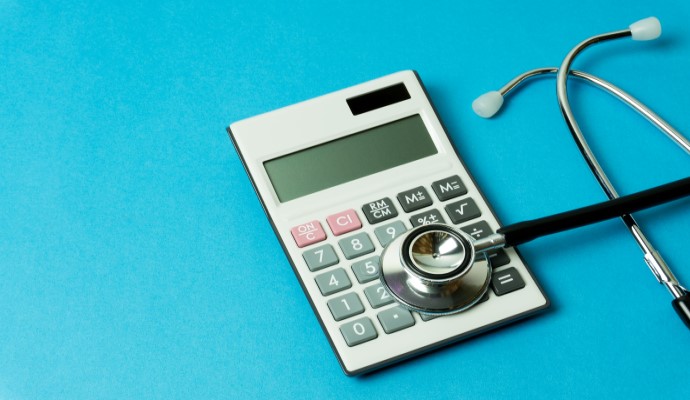With More Chronic Disease Comes More Medical Debt
A new study shows that the dollar amount of medical debt increases with the number of chronic diseases a patient has, which is leading to adverse financial outcomes.

Source: Getty Images
- Patients with chronic diseases face higher amounts of medical debt and are more likely to face adverse financial outcomes compared to patients with no chronic disease or just one diagnosis, according to a study published in JAMA Internal Medicine.
Researchers at the University of Michigan analyzed medical claims data from a large state-level insurance plan between January 2019 and January 2021, linking the data to commercial credit information from January 2021.
They found that, among the over 2.8 million adults covered by the health plan, rates of medical debt in collections, non-medical debt in collections, total delinquent debt, low credit score, and recent bankruptcy increased with the number of chronic diseases a patient had.
Chronic disease patients ended up owing more for medical care, as well as non-medical costs, and those numbers increased with the number of chronic diseases a patient had. For example, the adjusted amount of medical debt in collections increased 60 percent from $784 for patients with no chronic disease to $1,252 for patients with seven to 13 chronic diseases.
The adjusted amount of non-medical debt also increased by 18 percent from $1,999 for those with no chronic diseases to $2,357 for those with seven or more chronic diseases.
Patients with chronic diseases are struggling to pay their medical bills. The study showed that almost a third of patients with seven or more chronic diseases had medical debt in collections versus just 7.7 percent of patients with no chronic disease.
Additionally, almost a quarter of patients with multiple chronic conditions had non-medical debt in collections versus 17 percent of non-chronic disease patients and 43 percent had some type of delinquent debt versus 14 percent of those without chronic disease.
Chronic diseases associated with the largest increases in medical debt collections were severe mental illness ($274), substance use disorders ($268), stroke ($235), congestive heart failure ($234), and liver disease ($228).
Poor financial status is a social determinant of health and has been linked to the development of chronic disease, researchers note. However, they add that the relationship is bidirectional: physician health is also associated with financial health.
Chronic disease is burdening patients financially, especially as health plans shift more costs to patients. Not only are more individuals subject to a deductible, but the average deductible amount is also higher. Overall, the burden of deductibles has increased 92 percent over the last decade, Kaiser Family Foundation reports.
As patients owe more for care, providers are also less likely to collect. A recent report from Crowe Revenue Cycle Analytics found that patient collection rates at hospitals decline and bad debt increases when patients owed $7,500 or more in medical bills.
The study’s findings spell trouble for provider organizations in the US, which do not offer robust financial counseling compared to other countries. Providers are also struggling to deliver the financial experience patients want in order to understand and pay their medical bills.
Researchers also warned that failing to address medical debt among patients with chronic diseases could lead to worse patient outcomes. Worse outcomes are also linked to increased healthcare spending.
"These results have important implications for patients, as worsened financial health is associated with increased rates of forgone medical care, worse physical and mental health, and increased mortality,” they wrote in the study.
